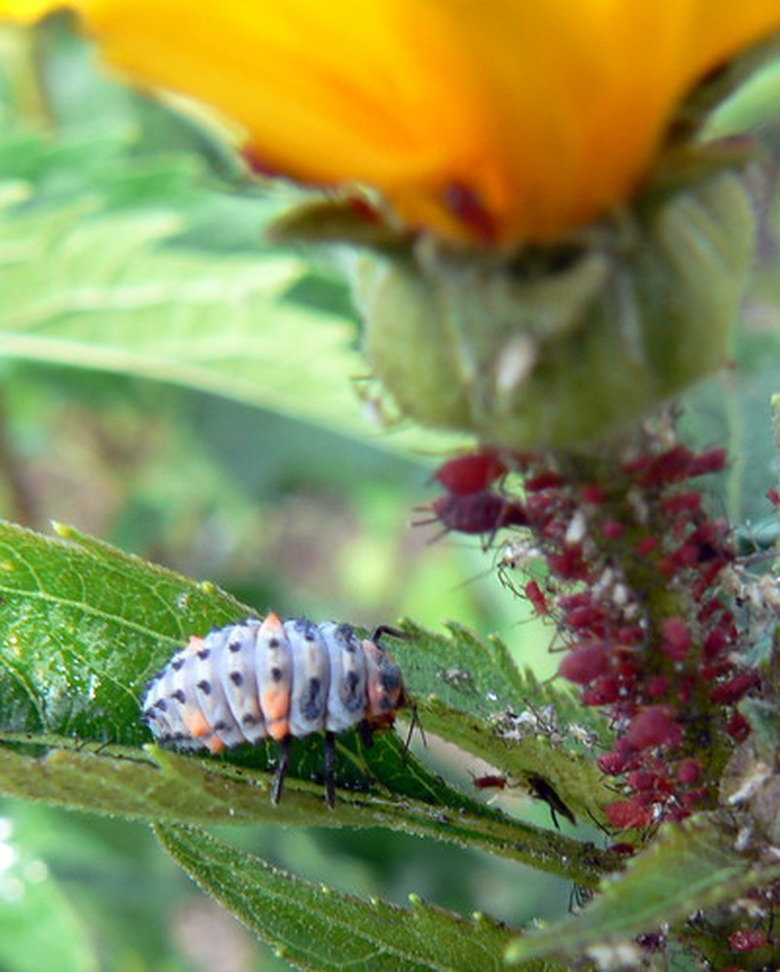Pyrethrum Cultivation
The natural insecticide pyrethrum is processed from a Chrysanthemum cinerariaefolium, a multistemmed member of the chrysanthemum family. Over the years, C. cinerariaefolium became so famous for the botanical insecticide it yields that many people simply call the plant itself "pyrethrum," rather than its common name of Dalmatian Chrysanthemum. Herbalist Lesley Bremness notes that homemade dried and powdered pyrethrum kills or deters many pests, including cockroaches, bedbugs, aphids, spider mites, flies and ants.
Plant Description
One Dalmatian Chrysanthemum can yield up to 100 flowers during the growing season. The perennial flower grows about 30 inches tall, and features multiple stems, each bearing a single, daisy-like flower with flat yellow centers and white petals. The stems and leaves resemble yarrow's foliage, with their lacy silhouette, gray-silver coloring and strong medicinal scent.
Commercial Cultivation
According to Ecological Agricultural Projects (EAP), farmers grow pyrethrum in mostly mountainous regions, including the higher elevations of Tanzia, Ecuador and Kenya. Most farmers use Dalmatian Chrysanthemums, although some cultivate a variety known as Persian Chrysanthemum. The flowers produce more abundantly on mountains, and like sunny, rocky slopes.
- The natural insecticide pyrethrum is processed from a Chrysanthemum cinerariaefolium, a multistemmed member of the chrysanthemum family.
- Over the years, C. cinerariaefolium became so famous for the botanical insecticide it yields that many people simply call the plant itself "pyrethrum," rather than its common name of Dalmatian Chrysanthemum.
Getting Started
This variety of chrysanthemum does best in the home garden when started as a seedling from a reputable nursery. If you'd like to grow it from seed, however, make sure to plant more than you need, given its lower-than-average germination rate. Start the plants indoors about six weeks before the last expected frost date. Set seedlings about a foot apart in their permanent beds.
Growing
Keep the flowers mulched and well-weeded, watering only in drought conditions. They prefer dry, alkaline soils and dislike high quantities of fertilizer, with the exception of phosphorous. Limestone (to raise the pH level of the soil) and bone meal or rock phosphate (to add phosphorous) may be added to increase flower production. Not surprisingly, given its use as an insecticide when dried, Dalmatian Chrysanthemum isn't troubled much by pests.
- This variety of chrysanthemum does best in the home garden when started as a seedling from a reputable nursery.
Harvesting and Drying
Pick the pyrethrum flowers between five and nine days after the flowers open. Choose a day that is warm and dry. Hang the flowers upside down by their stems in a dark room for at least a week, or put them in a dehydrator overnight.
Processing and Storing
Crush the flowers with a mortar and pestle or in a coffee bean grinder. The EAP notes that the more finely-ground the pyrethrum powder is, the more potent it will be as a pest-fighter. On the other hand, coarser powder won't dissipate as quickly. Wear a dust mask and gloves when processing the powder. If you'd like, mix talcum powder or diatomaceous earth with the pyrethrum to help it stick to the garden plants. For best results, store pyrethrum powder in an airtight container and keep away from light. The powder will remain effective for at least six months. At room temperature, the fresh flowers retain their potency for about 10 days.
- Pick the pyrethrum flowers between five and nine days after the flowers open.
- If you'd like, mix talcum powder or diatomaceous earth with the pyrethrum to help it stick to the garden plants.
Using Pyrethrum
Sprinkle the dried flowers on plants needing protection. Use sparingly and only on stressed plants because beneficial insects can be killed or paralyzed along with the plant predators. Inside, sprinkle the powder under rugs and cushions to control fleas and lice. While current data indicates pyrethrum is nontoxic to humans and other mammals, it's best to minimize contact with skin.
References
- "The Complete Herbal;" Lesley Bremness; 1994
- Ecological Agricultural Projects: Home Productino of Pyrethrum
